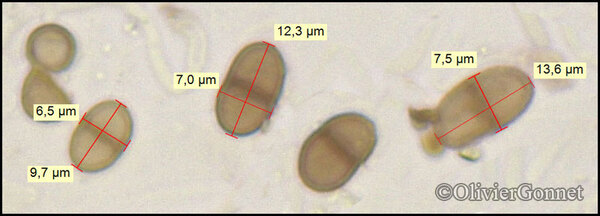Buellia caloplacivora Llimona & Egea
Bull. Inst. Cat. Hist. Nat., 51: 81, 1984.
Synonyms:
Distribution: C - Tosc. S - Camp (Nimis & Tretiach 2004), Cal (Puntillo 1996, Puntillo 2011), Si.
Description: Thallus crustose, episubstratic, rather thick, rimose-areolate, chalky white to cream-coloured, often forming orbicular patches on the thalli of other crustose lichens, especially Teloschistaceae, sometimes well-delimited by a pale grey prothallus. Medulla white, I-. Apothecia biatorine, black, adnate, rarely sessile, up to 0.5 mm across, with a pruinose or epruinose, usually flat disc, and a thin, finally excluded proper margin. Proper exciple Aethalea-type, thin, dark olivaceous to aeruginose in outer part, colourless within, the pigmented parts N+ violet-red; epithecium dark olivaceous to aeruginose, N+ violet-red; hymenium colourless; paraphyses capitate, the apical cells 3-4(-5) µm wide; hypothecium pale orange to reddish brown, inspersed with large oil droplets. Asci 8-spored, clavate to cylindrical-clavate, the apical dome K/I+ dark blue with a pale, conical-pointed apical cushion (axial mass), the wall I-, but the thin outer gel I+ blue, Bacidia-type. Ascospores 1-septate, slightly constricted at septum, brown, (8.5-)10-12(-13) x (5-)5.5-6.5(-7) μm, Buellia-type, thin-walled throughout, with a microrugulate to rugulate-areolate ornamentation. Pycnidia dark, immersed. Conidia bacilliform-ellipsoid, 2.5-4 x 1-1.5 µm. Photobiont chlorococcoid. Spot tests: thallus K- or K+ red, C-, KC-, P- or P+ faintly yellow, UV-. Chemistry: thallus without lichen substances, or with norstictic and connorstictic acids.Note: following Scheidegger (1993), this species growing on exposed volcanic rocks was synonymised with B. sequax by Nimis (1993), but it appears to be a different species (Giralt & van den Boom 2011, Giralt & al. 2011).
Growth form: Crustose
Substrata: rocks
Photobiont: green algae other than Trentepohlia
Reproductive strategy: mainly sexual
Most common in areas with a humid-warm climate (e.g. most of Tyrrenian Italy)
paras crustose Teloschistaceae when young
Poorly known taxon in need of further study
Commonnes-rarity: (info)
Alpine belt: absent
Subalpine belt: absent
Oromediterranean belt: absent
Montane belt: extremely rare
Submediterranean belt: absent
Padanian area: absent
Humid submediterranean belt: very rare
Humid mediterranean belt: very rare
Dry mediterranean belt: absent
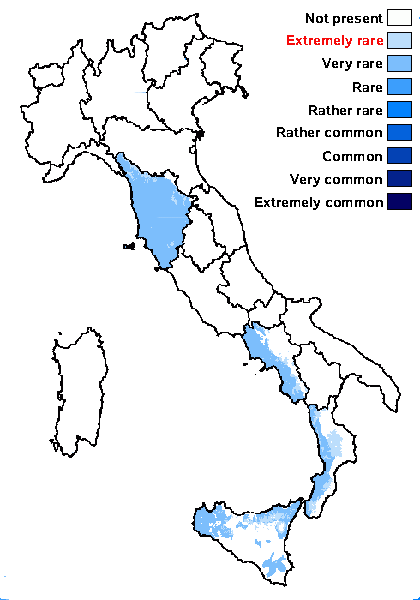
Predictive model
Herbarium samples
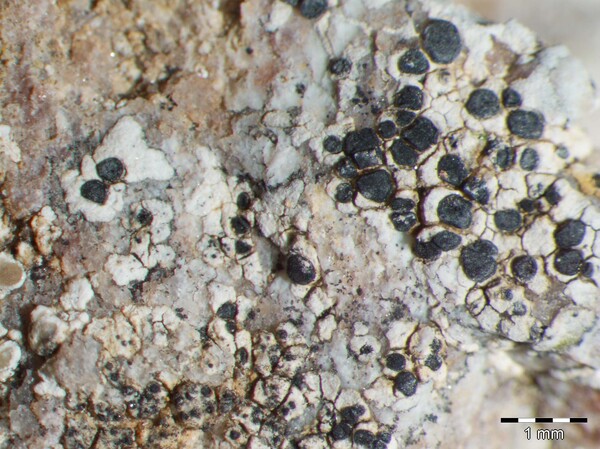
Harrie Sipman – Source http://www.bgbm.fu-berlin.de/sipman/Zschackia/AegeanLichens/CaloplacaAC.htm - As Caloplaca oasis
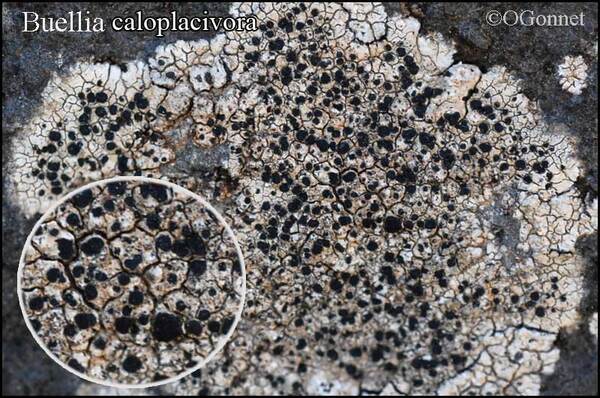
Courtesy Danièle et Olivier Gonnet - Source: https://www.afl-lichenologie.fr/Photos_AFL/Photos_AFL_B/Buellia_caloplacivora.htm
France, sur roche basaltique - cap d'Agde - session AFL 2010 - Hérault
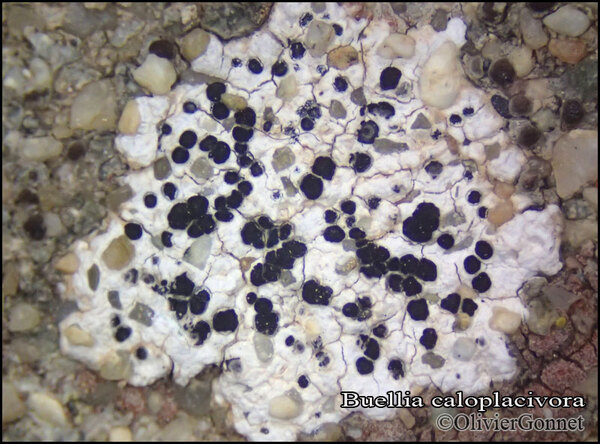
Courtesy Danièle et Olivier Gonnet - Source: https://www.afl-lichenologie.fr/Photos_AFL/Photos_AFL_B/Buellia_caloplacivora.htm
France, Ajaccio, sémaphore de la Parata, alt. 80 m - Corse
11/10/2018
Growth form: Crustose
Substrata: rocks
Photobiont: green algae other than Trentepohlia
Reproductive strategy: mainly sexual
Most common in areas with a humid-warm climate (e.g. most of Tyrrenian Italy)
paras crustose Teloschistaceae when young
Poorly known taxon in need of further study
Commonnes-rarity: (info)
Alpine belt: absent
Subalpine belt: absent
Oromediterranean belt: absent
Montane belt: extremely rare
Submediterranean belt: absent
Padanian area: absent
Humid submediterranean belt: very rare
Humid mediterranean belt: very rare
Dry mediterranean belt: absent

Predictive model
| Herbarium samples |

Harrie Sipman – Source http://www.bgbm.fu-berlin.de/sipman/Zschackia/AegeanLichens/CaloplacaAC.htm - As Caloplaca oasis

Courtesy Danièle et Olivier Gonnet - Source: https://www.afl-lichenologie.fr/Photos_AFL/Photos_AFL_B/Buellia_caloplacivora.htm
France, sur roche basaltique - cap d'Agde - session AFL 2010 - Hérault

 INDEX FUNGORUM
INDEX FUNGORUM
 GBIF
GBIF

